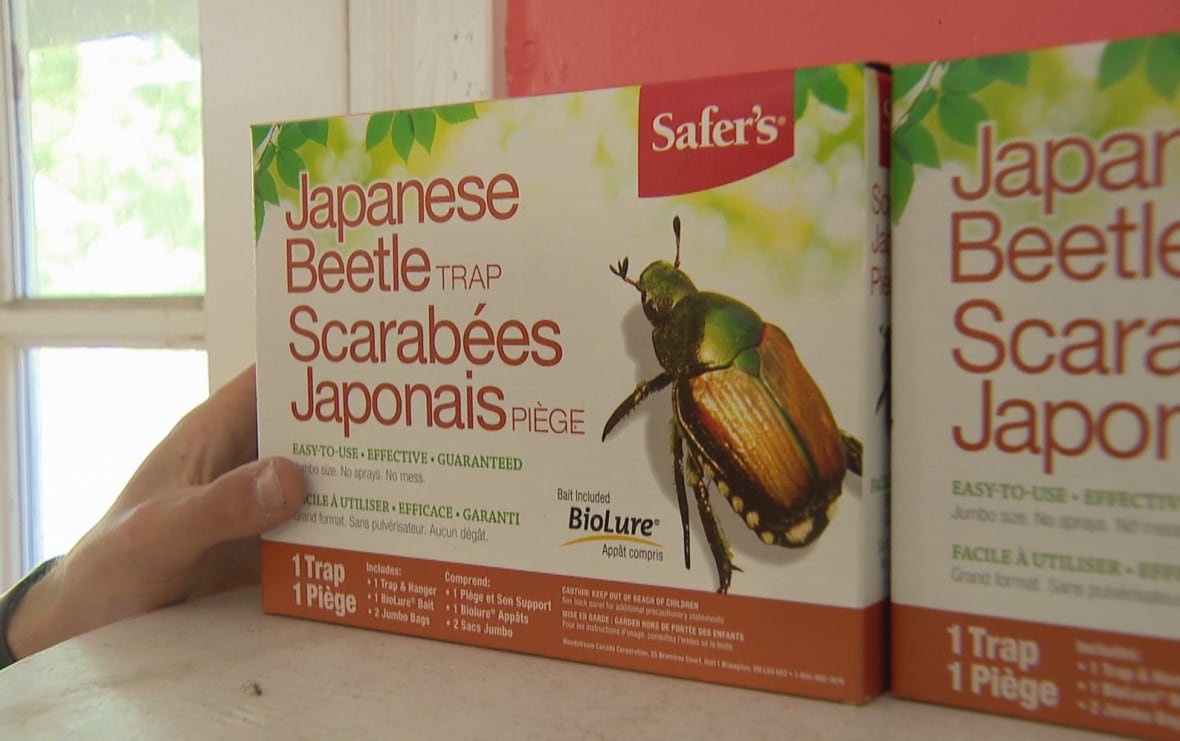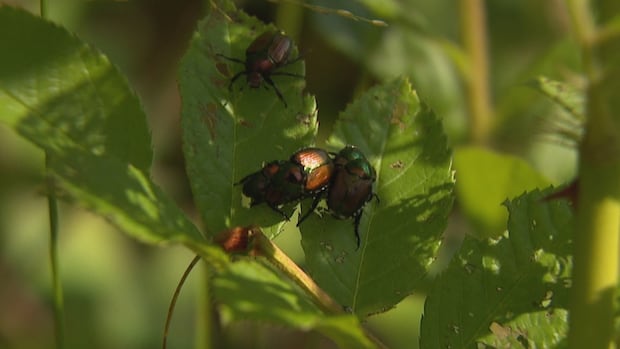Gardeners, academic at odds on how to best deal with growing Japanese beetle population
Warmer winters have allowed beetle to survive and thrive, expert says
Ravaging rose bushes and feasting on backyard crops, Japanese beetles are an ongoing issue for gardeners in the Halifax area, but there's little consensus on how to best deal with them.
Shawn Spurr, who has maintained his home garden in Dartmouth for 40 years, recently spotted the small insects on his blooming pea plants.
"Come out the next day — stumps," he said, adding that only a few flowers remained after the beetles had gnawed off the tops.
"It's frustrating."
And it's not just his peas. Spurr says the beetles have eaten his tomato plants, peppers and, he suspects, his potatoes. He won't know for sure until they're harvested.

Spurr says this year, the beetles are the worst he's ever seen.
Established as an invasive species, Japanese beetles have been in Nova Scotia for nearly a century.
But their populations have only boomed recently, according to Paul Manning, an entomology professor at Dalhousie University in Halifax. He said more larvae are surviving over the winter due to warmer temperatures caused by climate change.
"The population definitely is spreading, so we're seeing new pockets pop up," said Manning. "They do really well in human-dominated landscapes because they feed on so many different kinds of plants and people garden with a lot of their preferred things to eat."
Predators and parasites haven't caught up to the spread of the beetle, said Manning. It may take some time, but once they do, the population will drop off significantly.
Manning said, right now, the beetles are at their peak activity, but it usually only lasts a few weeks.
To trap or not to trap
Manning said there are a lot of remedies people can try to eliminate the beetle, but few work. Killing them releases a pheromone which attracts more.
"It's a very tricky little beetle," said Manning.
Insecticides don't help much in outdoor gardens, he said, and pheromone traps only confirm there's a presence and may draw more to nearby plants.
"The trap will attract tons, but it's really hard to make a dent in the population by using traps," he said. "You would have to use a great deal of them and replace the pheromones very frequently."
Instead, Manning recommended spending an hour every evening, when the bugs are less active, picking and shaking them out of the plants and drowning them in soapy water. He said this strategy is the most effective.
But for some, that's not realistic.

Alexander Godfrey, the nursery lead at Lakeland Plant World in Westphal, said many customers are dealing with the bugs and don't always have time to pick or shake them off.
"It's a lot of work, especially if you have a big garden," he said.
He recommends people place a pheromone trap about 20 metres from the affected plants, and hanging it a couple metres off the ground.
Godfrey said the traps have helped keep the beetles off the greenhouse's stock.
"There were a couple on our roses," he said. "Once we put out a trap, within about two days they were completely gone."
Trying both methods
Spurr said at first, he and his wife tried the hand-picking method but it was tedious work. Then he switched to a pheromone trap.
It sits in his yard, several metres away from the garden. He said it saves him time.
In the few days he's had it, Spurr said he's noticed a difference, but he's not sure if all the beetles he's catching are from his garden or if they're coming from around the neighbourhood.
Manning said the beetles don't seem to be affecting larger-scale agriculture yet, but vineyards and hops growers would be most at risk.


